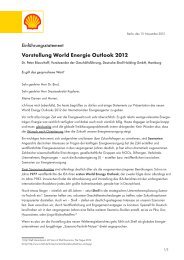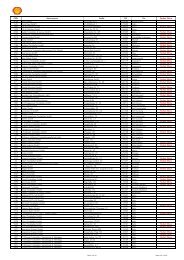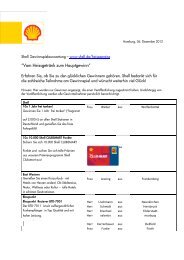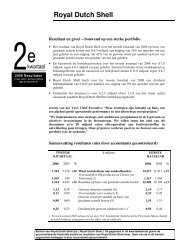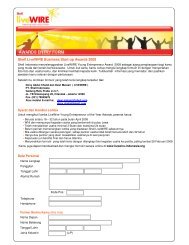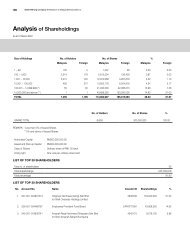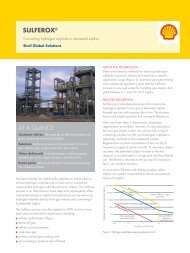ENVIRONMENTAL STATEMENT BARDOLINO DEVELOPMENT
ENVIRONMENTAL STATEMENT BARDOLINO DEVELOPMENT
ENVIRONMENTAL STATEMENT BARDOLINO DEVELOPMENT
You also want an ePaper? Increase the reach of your titles
YUMPU automatically turns print PDFs into web optimized ePapers that Google loves.
For small scale piling operations where it is not deemed necessary to have a<br />
qualified MMO on board a Fisheries Liaison Officer (FLO) may be a suitable<br />
alternative depending on relevant experience. The project EA will be able to advise<br />
on MMO requirements.<br />
In addition to MMOs, but not instead of, the use of Passive Acoustic Monitoring<br />
(PAM) systems for acoustic detection of cetaceans is encouraged to increase<br />
detection capabilities.<br />
The Marine Mammal Observer (MMO) should adhere to the following Protocol<br />
during piling activities:<br />
1. Look and Listen<br />
Beginning at least 20 minutes before commencement of any use of the hammer, the<br />
dedicated MMO should carefully make a visual check from the optimum vantage<br />
point of the HLV to see if there are any marine mammals within the exclusion zone<br />
(as determined using the output from the noise propagation modelling). The MMO<br />
must have adequate visibility to see the full extent of the exclusion zone.<br />
After the watch for marine mammals have given the all clear to proceed with the<br />
piling operation it is recommended that a ‘soft start’ occurs. This is where the<br />
intensity and/or speed of the piling operation is slowly ramped up until the full piling<br />
intensity is reached. All piling operations should ensure that all ‘soft starts’ occur<br />
during daylight hours when MMOs can carry out the required 30 – 40 minute watch<br />
(20 minimum). Piling can begin in daylight and continue through in to darkness but<br />
piling cannot commence at night as this may be interpreted as ‘deliberate<br />
disturbance’.<br />
2. Delay<br />
If marine mammals are seen within the defined exclusion zone commencement of<br />
the piling operation should be delayed until they have moved away, allowing<br />
adequate time after the last sighting for the animals to move away (at least 20<br />
minutes).<br />
3. The ‘Soft Start’<br />
Ensure that the correct ‘soft start’ procedure is followed. ‘Soft starts’ are intended as<br />
a time period to allow marine mammals to move away from an area should they wish<br />
to do so.<br />
Power should be built up slowly from a low energy start-up (e.g. starting with low<br />
pressure piling) over as long a period as is technically possible (please consult with<br />
the EA on this) to give adequate time for marine mammals to leave the vicinity. This<br />
build up of power should occur in uniform stages to provide a constant increase in<br />
output. There should be a ‘soft start’ every time the hammer is used, even if no<br />
marine mammals have been seen.<br />
Once the ‘soft start’ has commenced it is not required to stop even if marine<br />
mammals are subsequently observed.


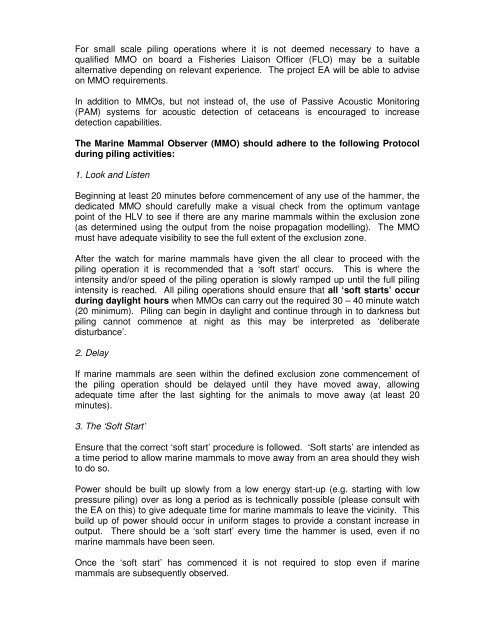

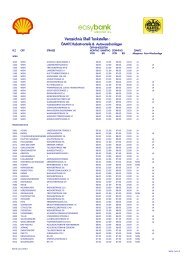
![Download Shell AutoGas Stationen [Stand: Januar 2013] (PDF](https://img.yumpu.com/9982753/1/190x245/download-shell-autogas-stationen-stand-januar-2013-pdf.jpg?quality=85)

